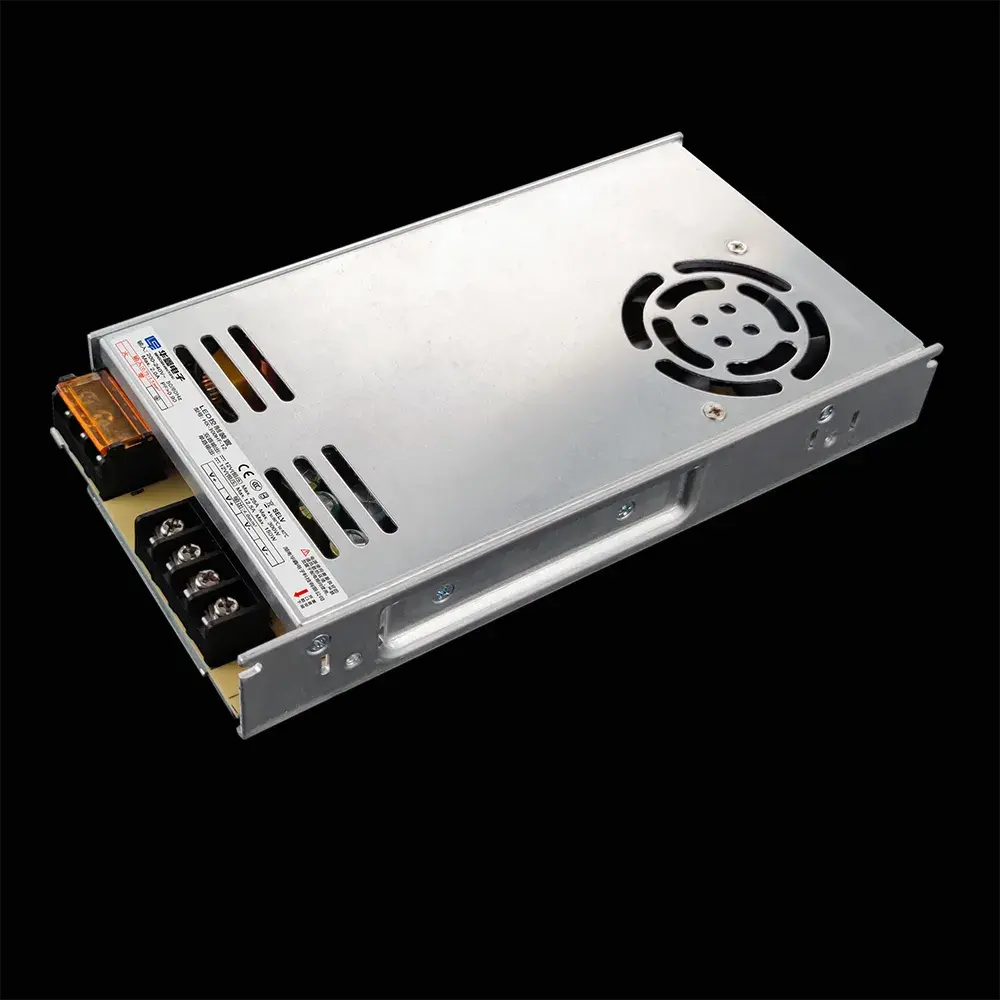How Does SMPS Convert AC to DC?
LED lighting system depends on one crucial component: a reliable LED AC to DC switching power supply. Without it, your lights would flicker or simply not turn on. SMPS—short for Switched-Mode Power Supply—is the technology that efficiently transforms alternating current (AC) from the grid into direct current (DC) suitable for LED drivers and other electronics.
What Makes SMPS Different from Linear Power Supplies
Traditional linear power supplies waste a significant portion of energy as heat. SMPS, on the other hand, rapidly switches transistors on and off at high frequencies, minimizing energy loss and allowing compact designs. This “switching” nature enables precise voltage regulation and a wide input range. It’s ideal for environments where stability and efficiency are non-negotiable.

The Core Principle: How SMPS Converts AC to DC
AC Rectification
The process begins with rectification. The AC input voltage, typically 110V or 220V, first goes through a bridge rectifier made up of diodes. This process converts the AC into a form suitable for further processing. This circuit converts the alternating voltage into a pulsating DC signal.
Filtering the DC Signal
The pulsating DC is then smoothed using capacitors, which store and release charge to reduce ripple. This step produces a more stable DC voltage, but it’s not yet ready for use.
High-Frequency Switching
Next, the rectified DC is fed into high-speed transistors (often MOSFETs) that switch on and off thousands of times per second. This stage uses Pulse Width Modulation (PWM) to control voltage and current precisely while improving efficiency.
Voltage Transformation and Regulation
The high frequency signal passes through a ferrite core transformer for voltage reduction or isolation. A feedback loop then continuously monitors the output voltage, adjusting the switching duty cycle to ensure a stable DC output.
Key Components Inside an LED AC to DC Switching Power Supply
Input Stage
This section includes surge protectors, EMI filters, and rectifiers. It stabilizes the input and prevents noise interference from affecting nearby devices.
Output Stage
Here, the DC output is rectified, filtered, and fine-tuned using feedback mechanisms. Optocouplers provide isolation between high-voltage and low-voltage sections, ensuring safety and reliability.
Advantages of SMPS in LED Applications
High Efficiency: Converts most AC power to DC with minimal loss.
Compact Design: Smaller and space-saving compared to linear supplies.
Low Heat: Generates less heat, reducing heat sink requirements.
Stable Output: Provides consistent voltage for sensitive LED circuits.
Universal Input: Operates reliably across different voltages and regions.
FAQs About LED AC to DC Switching Power Supply
1. What is the main purpose of an LED AC to DC switching power supply?
It converts high voltage AC into low voltage DC for powering LED lights safely and efficiently.
2. Can SMPS work with different input voltages?
Yes. Most modern units support universal inputs from 90V to 264V AC.
3. Why is SMPS more efficient than a linear power supply?
It uses switching instead of resistive regulation, minimizing heat loss.
4. How can I identify a high-quality SMPS?
Look for high efficiency, PFC compliance, and safety certifications like CE or UL.
5. Is SMPS safe for continuous LED operation?
Absolutely—provided it’s properly ventilated and matched to the LED load.
SMPS Is the Smart Choice for LED Power Conversion
A modern LED AC-to-DC switching power supply not only converts energy but also maximizes its efficiency. Its compact size and reliable performance make it a leading way in power conversion technology.
 EN
EN AR
AR NL
NL FR
FR DE
DE EL
EL HI
HI IT
IT KO
KO PL
PL PT
PT RU
RU ES
ES TL
TL IW
IW ID
ID UK
UK VI
VI HU
HU TH
TH TR
TR FA
FA MS
MS SW
SW AZ
AZ UR
UR BN
BN KK
KK